中国组织工程研究 ›› 2017, Vol. 21 ›› Issue (2): 268-272.doi: 10.3969/j.issn.2095-4344.2017.02.019
• 材料生物相容性 material biocompatibility • 上一篇 下一篇
中空纤维透析膜制备、传递特性及生物相容性
王世英,赵欣欣,时 军,杨素霞,孙志强
- 河南大学淮河医院,河南省开封市 475000
Preparation, transfer property and biocompatibility of the hollow fiber dialysis membrane
Wang Shi-ying, Zhao Xin-xin, Shi Jun, Yang Su-xia, Sun Zhi-qiang
- Huaihe Hospital of Henan University, Kaifeng 475000, Henan Province, China
摘要:
文章快速阅读:
.jpg)
文题释义:
血液透析膜发展情况:血液透析膜经历了3个发展阶段:第1代纤维素衍生物膜、第2代改性或再生纤维素膜和第3代高分子膜。聚砜是目前使用较多的一种膜材料,该材料由于成膜方法简单,具备良好的力学性能和化学性能,并且该膜使用过程中具备良好的抗生物抗降解性能。
聚砜:作为膜材料,利用非溶剂致相分离法能程控制备中空纤维透析膜,材料传递效率与纤维膜膜孔结构关系密切,并且制备的材料生物相容性良好,具有广泛的运用前景。
背景:聚砜膜具备良好的抗生物抗降解性能,但临床上对于以聚砜作为材料制备中空纤维透析膜的制备方法及血液相容性缺乏统一的标准。
目的:观察中空纤维透析膜的制备方法、传递特性及材料生物相容性。
方法:以聚砜作为膜材料,将一缩二乙二醇作为致孔剂,聚乙烯吡咯烷酮作为改性剂,N,N-二甲基乙酰胺作为溶剂,利用非溶剂致相分离法制备中空纤维透析膜。采用扫描电镜、超景深三维显微镜成像及孔隙率测试等测定透析膜的性能;利用超滤装置完成传递参数截留率和水通量参数测定;通过溶血实验、动态凝血时间实验及血小板黏附实验测定中空纤维透析膜的血液相容性,以Ⅱ型医用聚氨酯材料作为阴性对照。
结果和结论:①中空纤维透析膜形态:制备的中空纤维透析膜断面不对称,质量分数17%透析膜中间层呈大孔状结构,而质量分数19%,21%及23%的透析膜制备的中空纤维透析膜呈海绵状结构;②中空纤维透析膜孔隙率:中空纤维透析膜和Ⅱ型医用聚氨酯材料在膜面积相同的情况下,中空纤维透析膜密度显著低于,孔隙率显著大于阴性对照材料(P < 0.05);③中空纤维透析膜传递性能:中空纤维透析膜水体积及水通量,显著高于阴性对照材料(P < 0.05);④中空纤维透析膜血液相容性:两种材料共进行3次溶血实验结果显示:中空纤维透析膜平均吸光度值和溶血率显著高于阴性对照材料(P < 0.05);动态凝血时间实验及血小板黏附实验结果显示,中空纤维透析膜20,40,70 min动态凝血时间显著短于阴性对照材料(P < 0.05)。结果提示:将聚砜作为膜材料,利用非溶剂致相分离法能程控制备生物相容性较好的中空纤维透析膜,材料具有良好的血液相容性及传递效率。
ORCID: 0000-0002-4344-0570(王世英)
中图分类号:

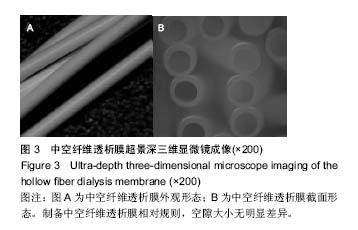
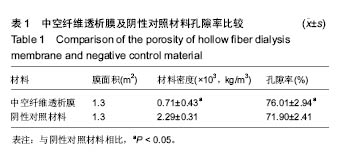
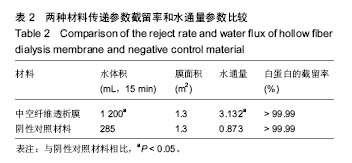
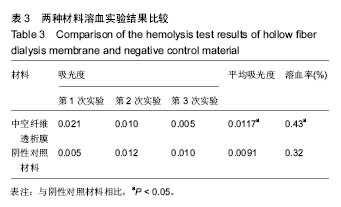
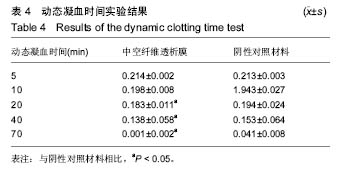
.jpg)
.jpg)
.jpg)
.jpg)